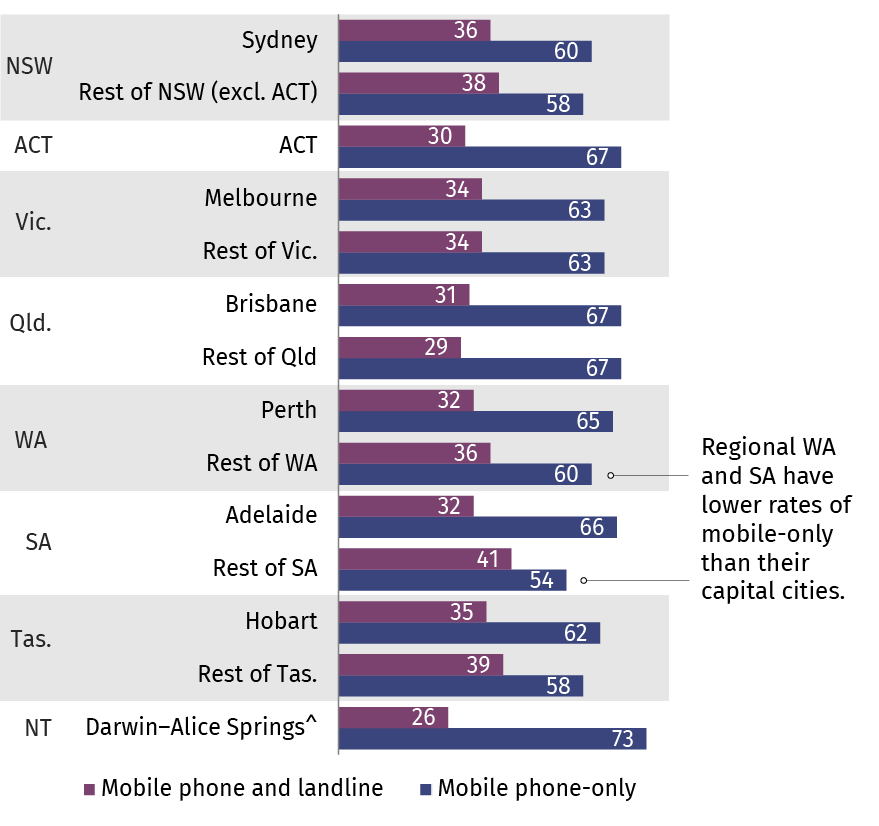
Mobile-only Australians: Two-thirds of Australians abandon landline
Two-thirds (63%) have a mobile but no longer have a landline for voice calls at home. This is a slight increase from June 2020 when 60% of Australians were mobile-only for voice calls at home – and the increase is slowing, ACMA reports. More about Australia landline use find out below.
Most Australian adults have only a mobile to make voice calls at home, with the move away from landlines continuing.
Two-thirds (63%) have a mobile but no longer have a landline for voice calls at home. This is a slight increase from June 2020 when 60% of Australians were mobile only for voice calls at home – and the increase is slowing.
Since 2015, the proportion of Australians who only have a mobile for voice calls at home has more than doubled. In June 2015, 29% of Australians were mobile-only for voice calls at home. In June 2018, 41% of Australians were mobile-only, with 51% in June 2019 and 60% in June 2020. As shown in Figure 1, the proportion of Australians becoming mobile-only has slowed in recent years.
Figure 1: Mobile-only for voice calls at home, 2015 to 2022 (%)

Base: Australians aged 18 and over. Total sample sizes for each year are provided in the Methodology and data tables.
Source: Roy Morgan Single Source. Data is for the 12 months to the month shown.
Australians who have a mobile and a landline Australia landline
Fewer Australians now have both a mobile and a landline at home. 38% had both a mobile phone and a landline in June 2020, falling to 34% in March 2022.
There has been no real change in the very small proportion of adults who still have a landline at home but do not have a mobile phone (1.6% in March 2022 vs 1.4% in June 2020).
This shows that the increase in those who are mobile-only for voice calls has not come from those with a landline getting a mobile phone but those who have a mobile phone abandoning their landlines.
The Effect of Age Australia landline
Age remains the most significant factor influencing rates of mobile-only for voice calls. Australians aged 25 to 34 years are the most likely to be mobile-only for voice calls (82%), and 3 times more likely than those of those aged 75 and over (27%).
Younger women are even more likely than younger men to be mobile-only for voice calls (85% of women aged 25 to 34 were mobile-only for voice calls in 2022, compared to 78% of men of the same age group).
However, for those aged 75 plus, older men are slightly more likely to be mobile-only than women of the same age group (30% compared to 24%).
Figure 2: Mobile-only for voice calls, age group and gender (%)

Base: Australians aged 18 and over. Total sample sizes for each year are provided in the Methodology and data tables.
Source: Roy Morgan Single Source. Data is for the 12 months to March 2022.
The effect of location
There is little difference between capital cities and their regional areas around Australia, apart from in Western Australia and South Australia.
Australians in those 2 states are less likely to be mobile-only for voice calls if they live in the regional part of their state than if they are in the capital city.
Figure 3: Mobile-only for voice calls, capital cities and other areas (%)

Base: Australians aged 18 and over. Total sample sizes for each year are provided in the Methodology and data tables.
^ Data for Darwin–Alice Springs is combined and does not include other areas of the Northern Territory. Australia landline
Source: Roy Morgan Single Source. Data is for the 12 months to March 2022.









